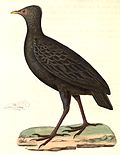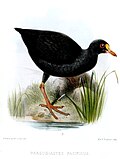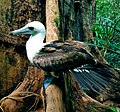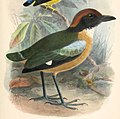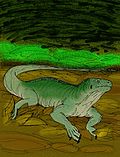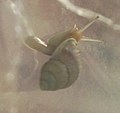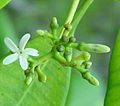
This is a list of Oceanian species extinct in the Holocene that covers extinctions from the Holocene epoch, a geologic epoch that began about 11,650 years before present (about 9700 BCE) [a] and continues to the present day. [1]
Contents
- Mammals (class Mammalia)
- Rodents (order Rodentia)
- Bats (order Chiroptera)
- Birds (class Aves)
- Landfowl and relatives (clade Pangalliformes)
- Waterfowl (order Anseriformes)
- Nightjars (order Caprimulgiformes)
- Owlet-nightjars (order Aegotheliformes)
- Swifts, treeswifts, and hummingbirds (order Apodiformes)
- Pigeons and doves (order Columbiformes)
- Rails and cranes (order Gruiformes)
- Shorebirds (order Charadriiformes)
- Boobies, cormorants, and allies (order Suliformes)
- Pelicans, herons, and ibises (order Pelecaniformes)
- Hawks and relatives (order Accipitriformes)
- Owls (order Strigiformes)
- Kingfishers and relatives (order Coraciiformes)
- Parrots (order Psittaciformes)
- Perching birds (order Passeriformes)
- Reptiles (class Reptilia)
- Crocodilians (order Crocodilia)
- Squamates (order Squamata)
- Turtles and tortoises (order Testudines)
- Amphibians (class Amphibia)
- Frogs (order Anura)
- Insects (class Insecta)
- Beetles (order Coleoptera)
- Moths and butterflies (order Lepidoptera)
- Bark lice, book lice, and parasitic lice (order Psocodea)
- Snails and slugs (class Gastropoda)
- Order Stylommatophora
- Plants (kingdom Plantae)
- Order Arecales
- Order Asterales
- Order Fabales
- Order Gentianales
- Order Lauraceae
- Order Lamiales
- Order Malvales
- Order Malpighiales
- Order Myrtales
- Order Oxalidales
- Order Proteales
- Order Sapindales
- See also
- Notes
- References
Oceania is a geographical region in the Pacific Ocean comprising Australasia, Melanesia, Micronesia, and Polynesia. [2] [3] Numerous species across Oceania became extinct as humans moved across the Pacific. Australia-New Guinea, New Zealand, and Hawaii have particularly large numbers of extinct species, so they listed in separate articles.
Extinctions from remaining Oceanian islands are listed below. This list includes sovereign states (such as Fiji) as well as island territories (such as French Polynesia). Extinctions from the associated states and dependent territory of New Zealand are listed below, and not with New Zealand proper. Papua New Guinea's Autonomous Region of Bougainville (part of the Solomon Islands archipelago) is included below, although the rest of Papua New Guinea is covered in List of Australia-New Guinea species extinct in the Holocene.
Extinctions in Easter Island, a territory of Chile, are included, but extinctions in the Juan Fernández Islands are included in the List of South American species extinct in the Holocene, and extinctions in the Galapagos Islands are in their own separate List of Galapagos Islands species extinct in the Holocene, as neither archipelago was ever settled by Polynesians and are not usually considered part of Oceania. Similarly, the Daito and Bonin Islands, under the sovereignty of Japan, are considered in the List of Asian animals extinct in the Holocene.
Many extinction dates are unknown due to a lack of relevant information.

